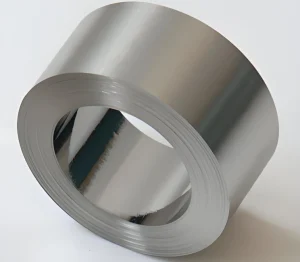
Introduction
Overview of Amorphous Steel in Electrical Engineering
Amorphous steel, also known as metallic glass, represents a significant breakthrough in material science for electrical applications. Unlike conventional crystalline metals, amorphous steel lacks a regular atomic structure, offering unique magnetic properties that contribute to reduced energy losses and improved performance in electrical devices. Its non-crystalline structure allows for enhanced magnetic flux density and minimal core losses, making it an ideal choice for transformers and other power distribution equipment.
Amorphous Steel in Electrical Equipment
Amorphous steel’s properties make it highly advantageous in various electrical equipment:
Transformer Cores: The use of metallic glass in transformer cores significantly reduces core losses compared to traditional silicon steel cores. This translates to greater energy efficiency and lower operating costs over the transformer’s lifespan.
Magnetic Components: It is utilized in magnetic components such as inductors and reactors where high efficiency and compact design are essential.
Power Distribution Systems: Amorphous steel is increasingly employed in power distribution systems to enhance overall energy efficiency and reduce environmental impact.
By harnessing the unique characteristics of metallic glass, electrical engineers can optimize the performance and sustainability of electrical equipment, paving the way for more efficient energy utilization in diverse industrial and residential applications.
Advantages of Amorphous Steel
Reduced Core Losses: Compared to traditional silicon steel, metallic glass exhibits significantly lower core losses. This characteristic enhances the efficiency of transformers and other electrical devices by minimizing energy dissipation.
Improved Efficiency in Transformers: The reduced core losses of metallic glass translate directly into improved overall efficiency of transformers. This results in lower operating costs and reduced environmental impact over the lifespan of the equipment.
Enhanced Magnetic Properties: Amorphous steel’s unique non-crystalline structure allows for higher magnetic flux density and improved magnetic properties. This property contributes to better performance in magnetic components such as inductors and reactors, enabling more compact designs and higher efficiency.
Applications of Amorphous Steel
Power Transformers: Amorphous steel is extensively used in power transformers to improve energy efficiency. Its reduced core losses make it ideal for applications where minimizing energy wastage is crucial.
Distribution Transformers: Similar to power transformers, distribution transformers benefit from the energy-saving properties of amorphous steel. They are employed in electricity distribution networks to ensure efficient power transmission over varying distances.
Inductors and Chokes:Metallic glass is utilized in the construction of inductors and chokes due to its enhanced magnetic properties. These components play a critical role in electronic circuits by storing and releasing energy efficiently, contributing to overall system performance.